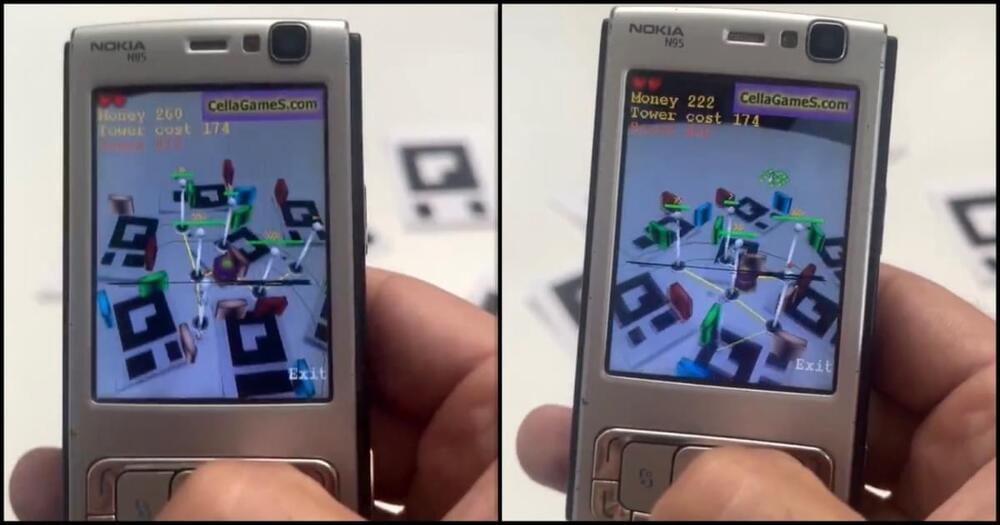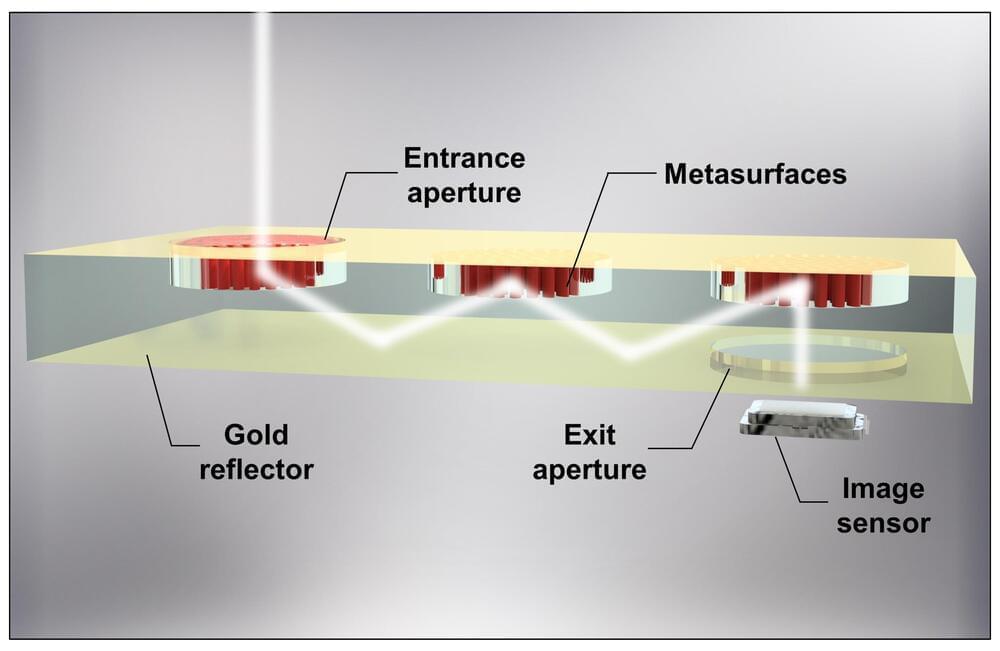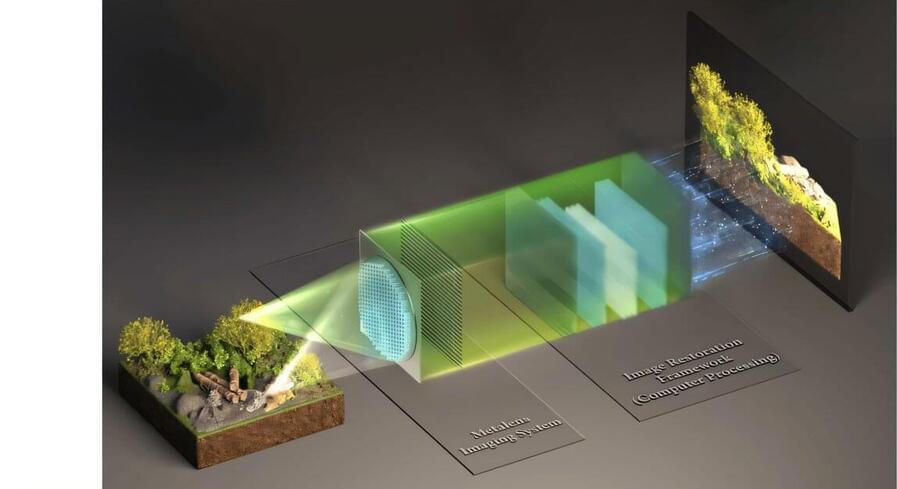XR Today reports on the latest extended reality news from around the globe, including virtual reality, augmented reality and mixed reality.
Category: augmented reality – Page 5

New Xreal glasses: virtual screens compatible with nearly all devices
Xreal is making waves in the world of mixed reality technology, offering a unique approach with its lightweight, almost portable glasses that project virtual screens directly in front of users’ eyes. The latest models, Xreal One and One Pro, come with a game-changing feature that enhances their usability—plug-and-play compatibility with nearly any device equipped with a USB-C video output.
Unlike previous models like the Air 2 Ultra, the Xreal One and One Pro are focused purely on screen mirroring. The glasses can seamlessly display content from an extensive range of devices, including iPhones, Android smartphones, Macs, PCs, and even the Steam Deck. All it takes is a quick connection via USB-C, and you’ll have a massive virtual screen in front of you—perfect for work, gaming, or watching a movie.
The technology behind these glasses relies on micro-OLED displays made by Sony, offering a resolution of 1920 × 1080 per eye. While this doesn’t quite match the ultra-high resolution of Apple’s Vision Pro, it’s worth noting that Xreal’s glasses come at a fraction of the cost—nearly ten times cheaper, in fact.

This Programmer Ran an Augmented Reality Game on a 2007 Nokia Phone
For those unaware, Whisk3D (original name Blendersito) is Dante’s Symbian-powered version of Blender, which he has been developing since late 2022. The app allows users to upload and model 3D characters on the phone, design game level assets, extrude vertices and edges, create planes, and even connect the phone to a monitor and keyboard for more convenient use.
In a true Blender fashion, Dante’s Whisk3D is open-source and can be accessed via the creator’s GitHub page. You can also support Dante here and check out more jaw-dropping experiments with Nokia-ran Blender over here.

DNA sequencing test can predict prognosis for advanced prostate cancer patients
Published in Nature Communications, a new study led by the University of Minnesota Medical School and Duke University found that a DNA sequencing test for advanced prostate cancer patients can distinguish between patients with poor and favorable prognoses.
The new blood-based test —called AR-ctDETECT—is designed to detect and analyze small fragments of tumor-derived DNA in the blood of certain patients with advanced, metastatic prostate cancer.
In this new study, the AR-ctDETECT test was used to analyze DNA from more than 770 blood samples from a phase 3 clinical trial of advanced prostate cancer patients. The test identified circulating tumor DNA (ctDNA) in 59% of patients with metastatic prostate cancer. Patients with detectable circulating tumor DNA had significantly worse overall survival compared to those without. These results demonstrate the potential of the AR-ctDETECT test to provide key genetic information to tailor treatments based on similar characteristics among patients.

Apple LiDAR Sensor for 3D Surveying: Tests and Results in the Cultural Heritage Domain
🏛️⛩️ ✍️ Lorenzo Teppati Losè et al.
The launch of the new iPad Pro by Apple in March 2020 generated high interest and expectations for different reasons; nevertheless, one of the new features that developers and users were interested in testing was the LiDAR sensor integrated into this device (and, later on, in the iPhone 12 and 13 Pro series). The implications of using this technology are mainly related to augmented and mixed reality applications, but its deployment for surveying tasks also seems promising. In particular, the potentialities of this miniaturized and low-cost sensor embedded in a mobile device have been assessed for documentation from the cultural heritage perspective—a domain where this solution may be particularly innovative. Over the last two years, an increasing number of mobile apps using the Apple LiDAR sensor for 3D data acquisition have been released.

Revolutionizing Light Control: Caltech’s Mind-Bending 3D-Printed Optical Devices
Caltech’s new optical devices, evolved by algorithms and crafted via precise 3D printing, offer advanced light-manipulation for applications like augmented reality and cameras.
Researchers at Caltech have developed a groundbreaking technology that “evolves” optical devices and fabricates them using a specialized 3D printer. These devices, composed of optical metamaterials, gain their unique properties from nanometer-scale structures. This innovation could enable cameras and sensors to detect and manipulate light in ways previously impossible at such small scales.
The research was conducted in the lab of Andrei Faraon, the William L. Valentine Professor of Applied Physics and Electrical Engineering and was published in the journal Nature Communications.

Ultra-compact optical design enhances virtual and augmented reality device cameras
Researchers from Seoul National University College of Engineering announced they have developed an optical design technology that dramatically reduces the volume of cameras with a folded lens system utilizing “metasurfaces,” a next-generation nano-optical device.
By arranging metasurfaces on the glass substrate so that light can be reflected and moved around in the glass substrate in a folded manner, the researchers have realized a lens system with a thickness of 0.7mm, which is much thinner than existing refractive lens systems. The research was published on Oct. 30 in the journal Science Advances.
Traditional cameras are designed to stack multiple glass lenses to refract light when capturing images. While this structure provided excellent high-quality images, the thickness of each lens and the wide spacing between lenses increased the overall bulk of the camera, making it difficult to apply to devices that require ultra-compact cameras, such as virtual and augmented reality (VR-AR) devices, smartphones, endoscopes, drones, and more.
Trump’s AI Plans Could Change Everything: Inside The Next AI Revolution
🚀 Q: How might Trump’s administration impact AI development in the US? A: Trump aims to make America “first in AI” by dismantling Biden’s policy framework and reducing government regulation, potentially leading to skyrocketing growth in AI, cryptocurrencies, blockchain, Web3, and augmented reality.
🔓 Q: What’s J.D. Vance’s stance on AI development? A: Trump’s potential VP J.D. Vance supports open source AI and decentralized power, aiming to prevent large tech companies from steering regulation and allowing smaller innovators to compete.
AI-based tool creates simple interfaces for virtual and augmented reality
A paper published in Proceedings of the 37th Annual ACM Symposium on User Interface Software and Technology, by researchers in Carnegie Mellon University’s Human-Computer Interaction Institute, introduces EgoTouch, a tool that uses artificial intelligence to control AR/VR interfaces by touching the skin with a finger.

Metalenses harness AI for high-resolution, full-color imaging for compact optical systems
Modern imaging systems, such as those used in smartphones, virtual reality (VR), and augmented reality (AR) devices, are constantly evolving to become more compact, efficient, and high-performing. Traditional optical systems rely on bulky glass lenses, which have limitations like chromatic aberrations, low efficiency at multiple wavelengths, and large physical sizes. These drawbacks present challenges when designing smaller, lighter systems that still produce high-quality images.